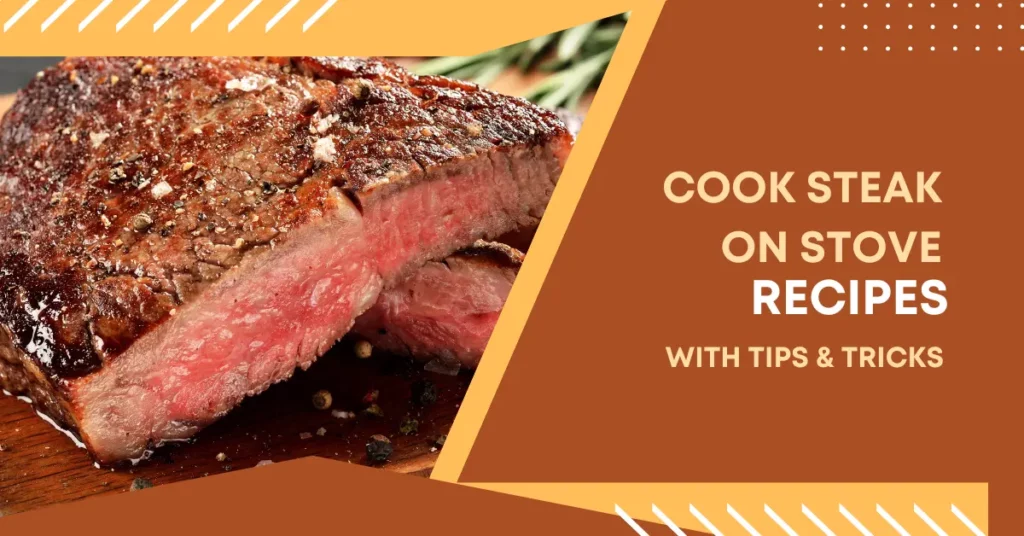This post may contain affiliate links. If you use these links to buy something we may earn a small commission. Thanks.
Cooking steak on the stove is one of the quickest and most effective ways to achieve a perfectly seared, juicy, and flavorful meal. While grilling may be the go-to method for many steak lovers, pan-searing on the stove offers unparalleled control over the cooking process. Knowing the right cooking time is essential to achieving the perfect doneness, whether you prefer your steak rare, medium-rare, or well-done.
Several factors influence cooking time, including the steak’s thickness, cut, and starting temperature. In this article, we will break down everything you need to know about cooking steak on the stove, from searing techniques to doneness levels. Whether you’re a beginner or an experienced cook, this guide will help you master the art of stovetop steak cooking.
Factors Affecting Cooking Time
Cooking time is not one-size-fits-all when it comes to steak. Several key factors impact how long your steak will take to cook on the stove:
1. Thickness of the Steak
The thickness of the steak is a major determinant of cooking time.
- Thin steaks (less than 1 inch thick) cook faster and usually take only a few minutes per side.
- Thicker steaks (1.5 inches or more) require more time and may need finishing in the oven after searing.
2. Type of Steak
Different steak cuts cook at slightly different rates due to their fat content and muscle structure:
- Ribeye: Rich in fat and marbling, cooks quickly but requires attention to prevent flare-ups.
- Sirloin: Leaner cut, cooks faster than a ribeye but remains tender.
- Filet Mignon: Thick and lean, takes longer to cook but stays extremely tender.
- New York Strip: Well-balanced cut that cooks evenly on the stove.
3. Starting Temperature
- A steak that is cooked straight from the fridge will take longer to cook.
- Allowing the steak to come to room temperature for about 30 minutes before cooking ensures even cooking.
4. Cooking Method
- Pan-searing: Creates a delicious crust and locks in juices.
- Butter basting: Adds flavor and helps with even cooking.
- Reverse searing: Useful for thick steaks that require slow cooking before searing.
5. Heat Level
- High heat is essential for a great sear but must be controlled to prevent burning.
- A cast-iron skillet is the best choice because it retains heat well and distributes it evenly.

Cooking Time for Different Levels of Doneness
Different people prefer different levels of doneness. Below is a general guideline for cooking times based on doneness:
| Doneness | Internal Temperature | Cooking Time Per Side |
|---|---|---|
| Rare | 120-130°F | 2-3 minutes |
| Medium Rare | 130-135°F | 3-4 minutes |
| Medium | 135-145°F | 4-5 minutes |
| Medium Well | 145-155°F | 5-6 minutes |
| Well Done | 155°F and above | 6-8 minutes |
Using a meat thermometer is the most accurate way to determine doneness. Since residual heat continues cooking the steak after removal from heat, taking it off the stove 5°F before the desired temperature ensures perfection.
Step-by-Step Guide to Cooking Steak on the Stove
Step 1: Prepare the Steak
- Remove the steak from the fridge 30 minutes before cooking to bring it to room temperature.
- Pat the steak completely dry with paper towels to help it sear properly.
- Generously season both sides with salt and black pepper. Optionally, add garlic powder, paprika, or your favorite steak rub.
Step 2: Preheat the Pan
- Use a cast-iron skillet for the best results.
- Heat the skillet on medium-high heat for about 5 minutes.
- Add 1-2 tablespoons of high-smoke-point oil (such as avocado, canola, or vegetable oil).
Step 3: Sear the Steak
- Place the steak in the hot pan and do not move it for the first couple of minutes.
- This helps develop a golden-brown crust.
Step 4: Flip the Steak
- Flip the steak only once to ensure even cooking.
- Cook according to the doneness chart above.
Step 5: Baste with Butter & Aromatics (Optional)
- For enhanced flavor, add 2 tablespoons of butter, garlic cloves, and fresh herbs (rosemary or thyme) to the pan during the last minute of cooking.
- Tilt the pan slightly and use a spoon to baste the steak with melted butter.
Step 6: Check Internal Temperature
- Use an instant-read thermometer inserted into the thickest part of the steak.
- Remove the steak 5°F before your target temperature, as it will continue cooking while resting.
Step 7: Rest the Steak
- Place the steak on a plate and cover it loosely with foil.
- Let it rest for 5-10 minutes to allow juices to redistribute, making the steak juicier and more flavorful.
Tips for Perfect Stovetop Steak
- Use a quality cut for the best flavor and texture.
- Don’t overcrowd the pan; cook only one or two steaks at a time.
- Let the steak rest before and after cooking for even temperature distribution.
- Experiment with seasonings like garlic, smoked paprika, or chili flakes.
- Pair with complementary sides like mashed potatoes, roasted vegetables, or a fresh salad.
Conclusion
Cooking steak on the stove is a straightforward process that, when done correctly, results in a mouthwatering meal with a perfectly seared crust and a juicy interior. By understanding factors such as steak thickness, heat level, and cooking times, you can achieve the perfect doneness every time.
Mastering stovetop steak preparation allows for greater control over flavor and texture compared to grilling. Whether you prefer a rare or well-done steak, following these steps will ensure a delicious and satisfying experience. Now, grab your favorite cut and put these techniques to the test a restaurant-quality steak is just minutes away.
